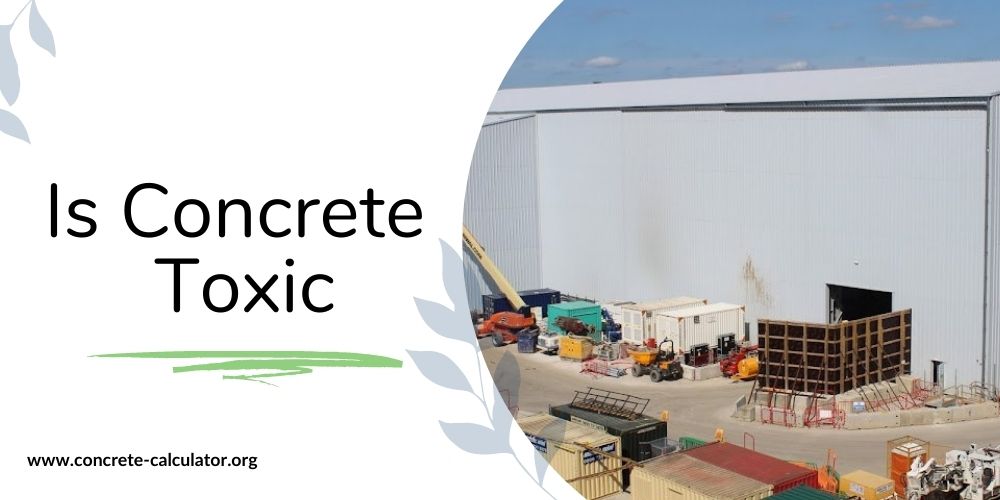Concrete is one of the most widely used construction materials globally. From buildings to roads, bridges to dams, it plays a crucial role in modern infrastructure. However, concerns have been raised about the potential toxicity of concrete. In this article, we aim to explore the subject, debunking common misconceptions and shedding light on the safety of concrete.
Understanding Concrete Composition – Is It Toxic?
To evaluate the toxicity of concrete, it is important to understand its composition. Concrete is primarily composed of three ingredients: cement, aggregates, and water. Cement, which binds the mixture together, is made from a combination of limestone, clay, and other materials. Aggregates, such as sand and gravel, provide bulk and strength to the concrete mixture.
Pro Tip: You should always use a cement calculator to have a balanced concrete, this will save you from any excessive material used in the project.

Contrary to popular misconceptions, concrete is not inherently toxic. While certain aspects of cement production and handling may carry minimal risks, stringent regulations and safety measures are in place to protect both workers and the environment.
The construction industry continues to prioritize sustainability and strives to reduce the environmental impact associated with concrete production. By implementing responsible practices and adhering to safety guidelines, concrete remains a safe and essential material for building our modern world.
Also Check: Can You Pour Concrete Over Concrete
Cement and Potential Health Risks
The primary health risk associated with concrete is airborne dust. When dry cement powder or aggregate particles are inhaled, they can cause irritation to the eyes, nose, throat and lungs. In order to minimize these risks, personnel should wear protective equipment such as masks and gloves when handling concrete components.
Additionally, proper ventilation should be provided in work areas where large quantities of dust may be generated. Concrete production also utilizes significant amounts of energy and produces greenhouse gases, though the industry is taking steps to reduce its environmental footprint.
New technologies are being developed to improve concrete sustainability while accommodating rising demand for construction materials.
Environmental Impact of Concrete
Concrete has a highly visible environmental footprint, as it requires energy-intensive production and consumes large amounts of natural resources such as sand and gravel. Additionally, concrete production can produce significant quantities of air pollutants from the burning of fossil fuels.
The cement industry is working to reduce these impacts by developing more efficient production methods and materials. For example, supplementary cementing materials (SCMs) such as slag, fly ash, and silica fume can be used to reduce the amount of cement required in a concrete mixture.
The use of these materials not only reduces costs but also decreases emissions from energy-intensive production processes. Concrete is an incredibly versatile material that has helped shape our modern world. By following safety guidelines and implementing responsible production methods, we can continue to reap its benefits without endangering the environment.
Related Post: Concrete Damage Types
FAQs
Is concrete toxic?
When used as intended, concrete is generally considered to be non-toxic. However, if improperly handled or stored, it can release hazardous compounds into the air or water that can be harmful to humans and wildlife.
What are the health risks associated with concrete?
The primary health risk associated with concrete is airborne dust. When dry cement powder or aggregate particles are inhaled, they can cause irritation to the eyes, nose, throat and lungs.
Is concrete environmentally friendly?
Concrete has a highly visible environmental footprint due to its energy-intensive production and consumption of natural resources. However, the industry is taking steps to reduce its environmental impact by developing more efficient production methods and materials.

